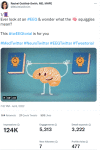Be in the Digital Room Where it Happens, Part II: Social Media for Neurology Educators
- PMID: 37114070
- PMCID: PMC10126786
- DOI: 10.1177/2329048X231169400
Be in the Digital Room Where it Happens, Part II: Social Media for Neurology Educators
Abstract
Social media has changed the way we communicate and interact. Unsurprisingly, it has also changed how we teach and learn. Younger generations of learners have transitioned from traditional educational sources to digital ones. Medical educators need to adapt to trends in medical education and develop fluency in the digital methods used by medical learners today. This is part two of a two-part series on social media and digital education in neurology. This article provides an overview of how social media can be used as a teaching tool in medical education and provides an overview in which it is grounded. We offer practical strategies on how social media can promote lifelong learning, educator development, educator support, and foster educator identity with accompanying neurology-specific examples. We also review considerations for incorporating social media into teaching and learning practices and future directions for integrating these tools in neurology education.
Keywords: COVID-19; Instagram; Twitter; child neurology; curriculum; information dissemination; medical education; neurology education; pandemic; social media.
© The Author(s) 2023.
Figures




References
-
- Eno C. Milestones guidebook for residents and fellows. 2020.
Publication types
LinkOut - more resources
Full Text Sources

